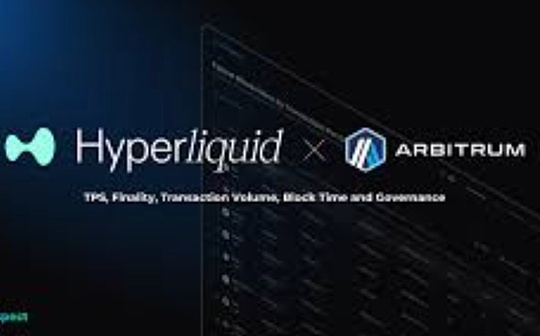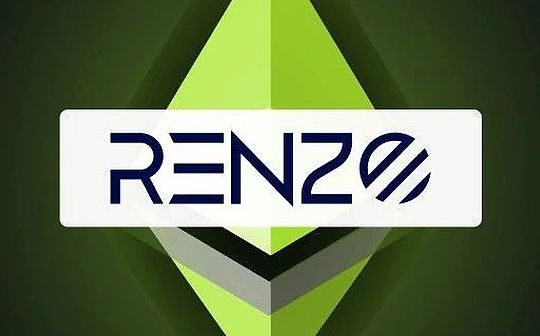
Source: Chain Tea House
1. Project introduction
Renzo is an innovative RESTAKING Defi platform.As the Liquid Restaking Token (LRT) ecological project of Eigenlayer, it has become the entrance to the EIGENLAYER ecosystem, which can ensure active verification services (AVS) and provide higher benefits than ETH betting.

Renzo simplifies the re -pledge of Ethereum, and ensures the security of DEFI investment through EIGENLAYER: cast EzetH by enabling ETH deposits, and uses an active verification service (AVS) to protect the application built on EIGENLAYER on the first layer of Ethereum.Essence
The Renzo protocol also provides a smooth way to interact. The interaction between users and Eigenlayer node operators is more efficient, which is of great significance in the Ethereum ecosystem.In this way, the complexity of DEFI has been simplified, and the seamless interaction between the user and the EIGENLAYER node operator is achieved, thereby improving the efficiency of the Ethereum ecosystem.
In addition, Renzo not only increases the income opportunities of ETH pledges, but also enhances the safety and reliability of the Ethereum blockchain services, which also marks an important step in Defi development.
Simply put, the core of Renzo is to promote the progress of innovative innovation without permission on Ethereum, and strive to achieve programmable trust acquisition in the entire ecosystem.After careful design, it promotes the widespread adoption of Eigenlayer through abstract and complex details and presenting the user -friendly interface, thereby increasing participation and participation.
2. Project operation
The Renzo protocol runs through a good structure and uses the EIGENLAYER frameworksimplifyEthereumRemakeEssence
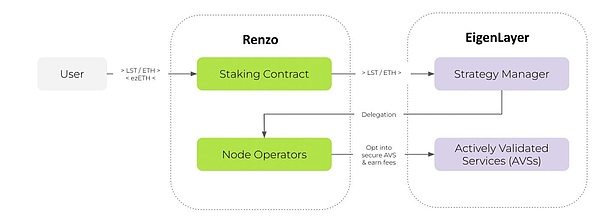
The following is a concise explanation of its operation method:
-
Deposit and coin:The user stores in ETH or Liquid Staking token (LST), and then Renzo will cast an equal amount of Ezeth (a mobile derivative that represents mortgaged assets).
-
Ensure avs security:Renzo ensures active verification services (AVS) on Eigenlayer, allowing users to inject ETH into and ensure the security of these services, so as to get additional rewards in addition to traditional shares.
-
Strategic management:As a strategic manager, Renzo optimizes the re -pricing process by selecting the best combination of AVS, so as to maximize the income while minimizing the risk.
-
Income generation:The protocol generates benefits through the ETH verification device. With the launch of AVS, these services are inserted through the Renzo node operator to generate redo -price income.
-
Reward allocation:The agreement captures the rewards generated by re -pricing and ensuring AVS security, and reflect it in the value of EzetH to provide users with reward to tokens.
-
Enhanced participation:Renzo introduced Ezpoints and Eigenlayer Points to reward users’ participation and contributions to the success of the agreement.
-
Governance and decision -making:The governance mechanism, including snapshot voting and the final chain governance, provides guidance for strategic decision -making, such as choosing AVS supported by node operators.
-
Binance Starting Pool: 2.50% of the total supply of tokens
-
Airdrop: 10.00% of the total amount of tokens
-
Investors and consultants: 31.56% of the total supply volume of tokens
-
Team: 20.00% of the total supply of tokens
-
Basic: 13.44% of the total supply volume of tokens
-
DAO vault: 20.00% of the total supply of tokens
-
Liquidity: 2.50% of the total supply of tokens
Through this multi -faceted method, the Renzo protocol provides a dynamic and useful resetting ecosystem for Ethereum users, which enhances income opportunities and network security.
3. Core mechanism
3.1EIGENLAYER protocol
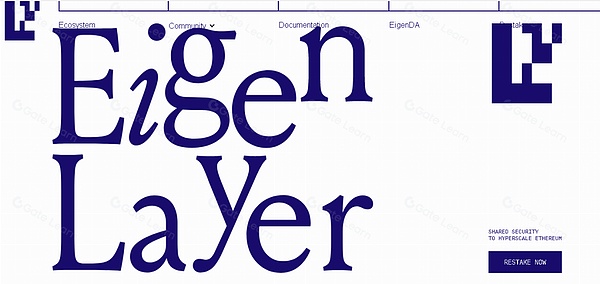
Eigenlayer is the core technical component of the Renzo protocol. It provides a new hierarchical structure for Ethereum network, making asset pledge and network verification more efficient and flexible.Eigenlayer’s design goal is to allow existing Ethereum verifications to use their pledged assets to support new and innovative services, thereby enhancing the scalability and functionality of the Ethereum ecosystem.The following is several key aspects of Eigenlayer in the renzo protocol:
1. Level verification
Eigenlayer works by creating an additional verification layer. This layer is independent of the Lord Ethereum blockchain.In this level, verificationrs can participate in more, different types of network activities, such as specific computing tasks or new consensus mechanisms.
2.Resource reuse
One of the core features of this layer is to allow verifications to reuse their pledged assets on the main chain of Ethereum.This means that the verificationrs can support more services without additional pledged funds, thereby improving capital efficiency and reducing the threshold for participating in new services.
3..Enhanced network function
Through Eigenlayer, the Renzo protocol has added the Ethereum network, including data verification, transaction execution, and other possible services, such as cloud storage or complex data processing tasks.These services may originally require new infrastructure and additional resource investment, and now they can be achieved through the assets of existing authenticants.
4. Reward and incentive
Verivers participating in Eigenlayer can get additional rewards, which comes from the services they provide on this level.This not only improves their overall returns, but also promote the participation of more verified as the growth of the network.
5. Security and decentralization
Eigenlayer’s design focuses on security and decentralization.Although it adds a new level on the Ethereum main chain, it still maintains the decentralization characteristics of the network and ensures the safety of operation through multiple verification and security protocols.
6. Community -driven governance
Eigenlayer and Renzo agreements support decentralized governance. Community members can affect key decisions through voting, such as new services and adjusting the reward mechanism.This ensures the transparency and adaptability of the protocol, so that it can respond to the needs and changes of the community.
By introducing Eigenlayer, the Renzo protocol provides a mechanism that enables Ethereum Networks to not only support existing pledge and verification operations, but also expand to more applications and services.EssenceThis technological innovation is of great significance to promote the long -term development of the Ethereum network and the progress of decentralized finance (DEFI).
3.2Etherbon pledged
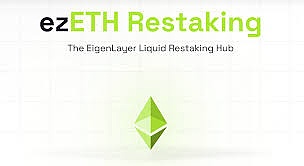
Ethereum pledges choose ETH token holders who reward and maintain network security.
These users use their assets to interact with the smart contracts on the Ethereum network to support multiple networks.Although they benefit from the pledge assets, when they choose the wrong verifications to pledge, they will also face the risk of being cut (Slashing).
The reduction is the punishment of the verifications of the verification of the standard for malicious activities or does not meet the Ethereum network.Users who choose malicious verifications to pledge are facing the risk of losing their pledged funds.
3.3Active verification service (AVS)
The “Active Validation Services (AVS) in the Renzo Protocol (AVS) is one of its core features, which aims to enhance the functionality and security of the Ethereum network.AVS allows pledges to increase their income by participating in additional verification activities and provide value -added services to the network.
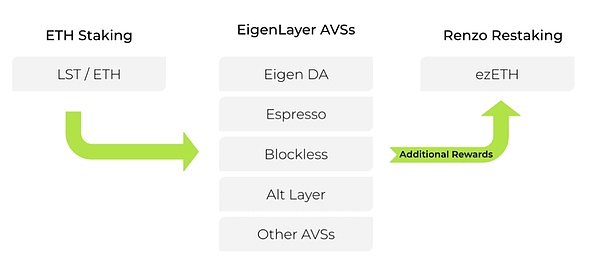
These services are implemented by Renzo through the EIGENLAYER framework. The following are some of the key aspects of AVS:
1. The purpose of AVS
The main purpose of AVS is to expand the function of the Ethereum network. In addition to traditional block verification, nodes can also participate in other activities that are beneficial to network.These activities can include data verification, network security operations, specific computing tasks, etc.
2. How to work
In the Renzo protocol, pledges can choose to participate in different AVS projects.This usually involves locking their pledged assets (such as ETH) to specific services, and these services require additional verification activities to maintain their operation and safety.In this way, pledges not only support the basic functions of the Ethereum network, but also provide support for other layers and services.
3. Reward mechanism
The pledgee participating in AVS can get additional rewards, which comes from the value -added services they provide to the network.This means that, in addition to basic pledge rewards, pledgeers can significantly increase their overall return rate by participating in AVS.
4. Risk management
Although participating in AVS can provide higher returns, it may also bring additional risks.These risks may include technical failure, service interruption or network attack.Therefore, the Renzo agreement has designed risk relief measures such as choosing a variety of AVS projects and implementing high -standard security agreements.
5. Governance and selection
The AVS projects usually select and approve the decentralized governance process, which means that community members (including pledges) can vote for which services should be included in the agreement.This ensures the transparency of the project and the participation of the community.
6. Technology Implementation
Technically, AVS is implemented through smart contracts and Eigenlayer frameworks. These contracts define the specific parameters, reward distribution and participation rules for services.This structure allows flexible service management and automated reward distribution.
Through active verification services, the Renzo agreement not only enhances the potential income of the pledged, but also brings more functional and value -added services to the Ethereum ecosystem.These services help improve the efficiency and security of the entire network, and also promote the development of decentralized finance (DEFI) and other blockchain applications.
3.4Cross -chain pledge
Cross -chain and re -pledge in the Renzo agreement is one of its innovative characteristics. This feature allows users to re -use the pledged assets between multiple blockchain to further improve capital efficiency and participate in the convenience of multiple blockchain ecosystems.Essence
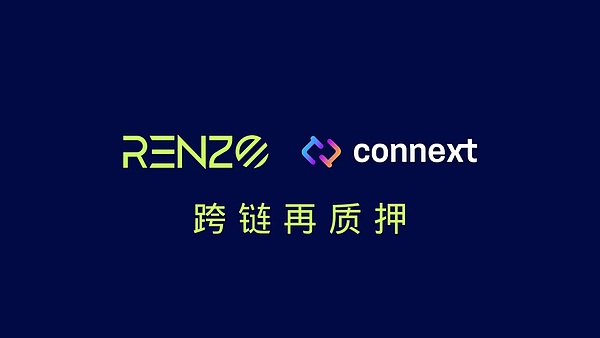
The following is the key aspect of the Renzo agreement cross -chain and re -pledge mechanism:
1. Definition of cross -chain and re -pledge
Cross -chain and re -pledge allows users to pledge assets on a blockchain (such as Ethereum), such as ETH, for related activities on another blockchain without the need to withdraw the original pledge.This is achieved by creating a derivative asset (such as Ezeth in the Renzo agreement) that represents the original pledged assets, which can be freely circulated and used on other chains.
2. Increase capital efficiency
Through this mechanism, pledges can participate in the pledge and governance activities of more blockchain projects without increasing additional capital investment.This not only improves the efficiency of the original capital, but also enables users to explore new investment opportunities and sources of income.
3. Technical implementation
Renzo uses advanced cross -chain technology, such as bridge connection and lock/unlocking mechanism to ensure the safe flow of assets between different chains.The user’s original assets are locked on one blockchain, and at the same time generate an equivalent assets on the equivalent value on another blockchain. These agency assets inherit some attributes and rights of the original assets.
4. Risk management
Although cross -chain re -pledge provides many benefits, it also brings certain risks, such as cross -chain bridge safety issues and liquidity risks.The Renzo protocol has designed corresponding security measures, such as multiple signatures and smart contract audits to reduce these risks.
5. Governance and automation
Cross -chain and re -pledge usually involve complex governance structure because it must deal with interoperability problems of multiple blockchain.The Renzo protocol may include automated governance tools, and users can effectively manage their pledge and voting rights on multiple chains.
6. Ecological system collaboration
The successful implementation of cross -chain and re -pledge depends on collaboration with other blockchain projects and agreements.The Renzo protocol has established cooperative relationships and compatibility standards to ensure extensive acceptance and use of cross -chain functions.
Through cross -chain pledge, the Renzo agreement not only strengthened its position as a multi -functional DEFI platform, but also promoted the boundary of blockchain technology, allowing users to seamlessly operate and value -added in multiple blockchain ecosystems around the world.EssenceThe advancement of this technology has opened up new possibilities for the future development of decentralized finance.
4. EZETH tokens

EZETH is the liquidity of Renzo to re -mortgage token, allowing users to re -mortgage while maintaining liquidity.After the user deposits ETH or other approved tokens, it will receive EzetH tokens. These tokens have similar value and can be used for transactions.
EZETH tokens are a tokens with rewards. Therefore, the price will increase with the increase of its underlying assets and the rewards it earns.These earning rewards can be the reward tokens of ETH, USDC and AVS.Users can also extract their pledge tokens and rewards.
The withdrawal assets involve the lifting of pledge that existing assets, which depends on the pledge strategy and the eigenlayer’s pledge agreement.The extraction process takes at least seven days, depending on the above factors.
Ezet to tokens cannot be withdrawn directly.Instead, users can sell their EzetH to the balancer, and the balancer will convert the EZETH token to ETH.This is why the circulation supply of the token is zero, and the total supply is 282,469 EZETH.
5. REZ token
Rez token plays a key role in the Renzo ecosystem, so that the holder can participate in the agreement decision -making, thereby jointly determining the development direction and key functions of the agreement.

5.1Rez characteristics and function
1. Governance
Rez vote to determine various issues, such as protocol updates, cost structure adjustment, new features, etc.This governance model promotes decentralized decision -making process and ensures that the development of the agreement is consistent with the interests of the community.
2. Reward mechanism
$ Rez may also be used as a reward mechanism to motivate users to participate in the maintenance, operation and other contributions of the agreement.This includes providing liquidity, participation in verification process or completing specific tasks.
3. Trading and liquidity
As a trading digital asset, $ Rez can be bought and sold on various cryptocurrency trading platforms, providing users with a channel for entering and exiting the Renzo ecosystem.Its market price may fluctuate according to market supply and demand, agreement development, and overall crypto market environment.
4. Protocol security and participation
Users holding $ Rez may participate in the security mechanism of the agreement, such as providing additional security guarantee for the network by pledged $ Rez, or helping to maintain the normal operation of the protocol by participating in specific network activities.
5. Economic model
Rez is a key factor when designing economic models.These parameters need to be carefully designed to ensure the long -term sustainability and economic security of the agreement.
6. Community construction
Rez promotes the interaction between users and the collective responsibility of the agreement.
The $ Rez token has become a cornerstone of the Renzo ecosystem due to its multifunctional and core role in the protocol.It not only provides a mechanism for financial incentives and governance, but also a bridge connecting community members, developers and users to jointly promote the development and innovation of the agreement.
5.2Supply and circulation
The total supply of $ Rez is 10,000,000,000,000, and the circulation supply after listing will be 1,050,000,000 (about 10.50%of the total supply of tokens).
Binance launched pool allocation: 250,000,000 (accounting for 2.50%of the total supply)
The start date of the starting pool of Binance: April 24, 2024

5.3Token distribution
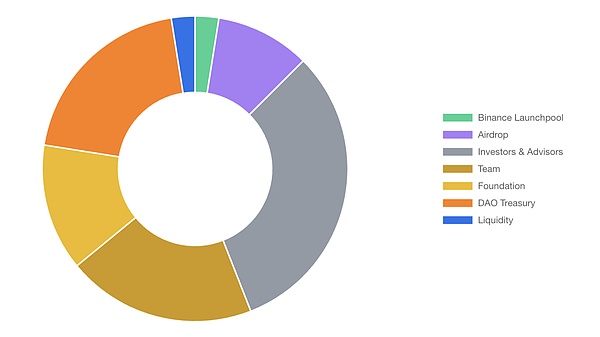
It is worth mentioning that, as a re -pledged platform, Renzo has many participation agreements in its ecosystem, allowing you to save your Ezet into their products and add the Renzo points you earlier, some of which will give you some points will give you to youDouble reward.These protocols include Pendle, Linea and Ionic.The entire list can be found at https://app.renzoprotocol.com/defi.Some participation agreements have no tokens, so interaction with them can increase your opportunity to get any potential airdrop qualification in the future.
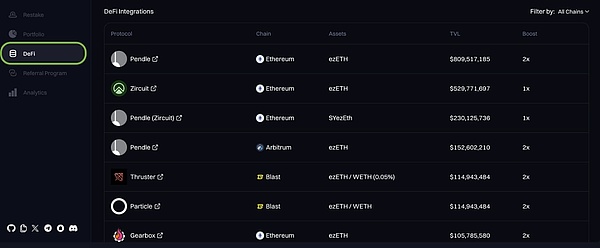
6. Team/cooperation/financing background
The Renzo protocol was founded by Kratik Lodha and Lucas Kozinski in 2023. As a bridge to the EIGENLAYER protocol, the ETH is pledged again.The main network of the Renzo protocol was launched on October 30, 2023, accepting the deposit and pledge native ETH tokens.
By January 14, 2024, the Renzo agreement successfully raised a $ 3.2 million seed fund to increase its valuation to $ 25 million.The leader of this round of seed funds is Maven11, and the participants include OKX Ventures, Robot Ventures, Protagonist, Bitscale Capital, Re7 Capital, Mantle Network, and Karatage.
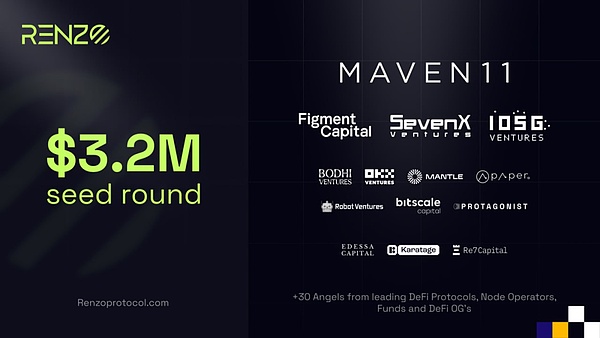
On February 21, 2024, the Binance Lab also invested in the Renzo agreement, and the investment amount was not made public.
The goal of the agreement is to develop its main network, surpass ETH and then pledged, and accept the encapsulated ETH (WBETH) and other ETH liquidity pledged token (LST) deposits.
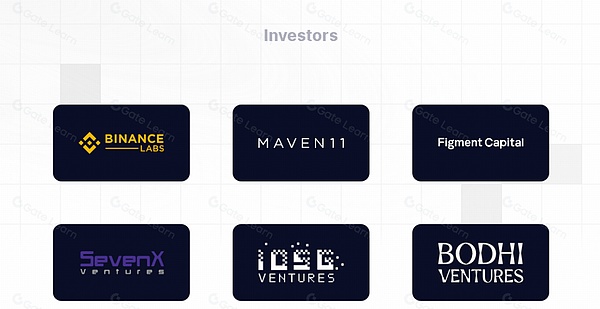
7. Project evaluation analysis
7.1Track analysis
The Renzo agreement is mainly active in the field of decentralized finance (DEFI), especially focusing on pledge and re -pledge services.Renzo makes it a platform that enhances Ethereum pledge efficiency and security by providing a re -pledge mechanism, cross -chain function, and an innovative technology involving Eigenlayer.
Here are some projects similar to Renzo. These projects also provide pledge or related services on the Defi track:
1. LiDO Finance
Lido is a decentralized pledge solution that provides liquid pledge services for Ethereum and several other blockchain assets.Lido allows users to pledge their cryptocurrencies while maintaining the liquidity of assets. It is similar to the re -pledge function of Renzo, but it is more focused on simplifying the pledge process and providing corresponding liquidity tokens (such as STETH).
2. Puffer Finance
Similar to the Renzo protocol, Puffer Finance is also a native re -pledged platform, allowing users to become Ethereum verifications without pledge of 32 ETHs.
Although these two protocols are important participants in the field of flow and re -pledges, their focus is different.Puffer Finance focuses on the use of verifications to achieve growth, while Renzo Protocol focuses on the diversification of ETH pledge.Puffer Finance uses verification votes to maximize profits. The Renzo protocol reduces costs through cross -chain functions. At the same time, it is committed to supporting the mainstream liquidity of the liquidity of tokens (LST) and Layer 2 solutions.
7.2Project advantage
One of the advantages of the Renzo protocol is to combine EzetH tokens to increase yields.EZETH tokens allow users to re -pledge assets on multiple projects to obtain higher returns than traditional pledge.
Another advantage is cross -chain capabilities, which can simplify the pledge process.There is also a user -friendly interface, which provides users with a lower cost and better experience.
The project may also provide multi -token support for other projects in the future.By using EigenLayer, the Renzo protocol can provide a safe, and without trust pledge experience.
7.3Project disadvantage
One of the disadvantages of the Renzo protocol is that the EzetH tokens are lacking to transfer, leading to zero the number of Ezet to tokens in circulation.This will reduce the ability of users to bring ezeth assets from damaged wallets to more secure wallets.
Another disadvantage is that the asset unlocking period is long.During this period, due to the lack of liquidity, the unlocked assets will limit users to obtain funds during unlocking, which may cause users to lose precious profit opportunities.
In addition, a major challenge for this agreement is the loopholes of smart contracts.The Renzo protocol is a new project that depends on a series of smart contracts (including Eigenlayer).Any vulnerability of any smart contract may cause the project to suspend operation.
Another challenge is the volatility of the cryptocurrency market, the instability of ETH asset prices, and the uncertainty of the cryptocurrency field.These will affect the willingness of users to interact with Renzo or participate in pledge.
8. Project summary
All in all, the Renzo agreement marks a major leap in the DEFI field. Through innovative methods, the Ethereum is simplified to re -mortgage, and the user participation and maximize the income.By connecting the user directly with the Eigenlayer ecosystem, Renzo not only improves efficiency, but also ensures the security of the blockchain.Its recent financing successfully reflects the strong trust in the market, highlighting the role of Renzo in making DEFI easier to obtain and more valuable.
In terms of its advantages and disadvantages, the Renzo agreement also has certain growth potential in the DEFI field, especially in providing innovative pledge solutions and promoting Ethereum network efficiency.However, its success will also depend on the development of technological innovation, market acceptance, and regulatory environment.

